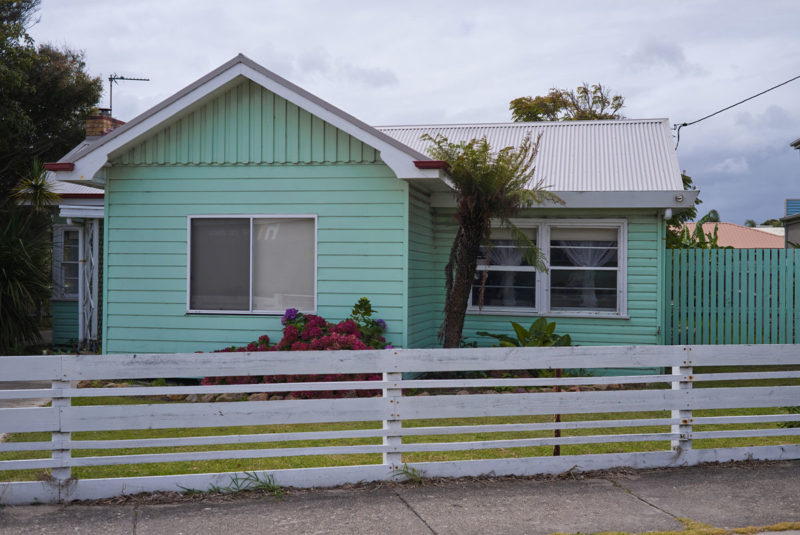Ready To Buy a Home?
Get Approved to Buy a Home
Rocket Mortgage® lets you get to house hunting sooner.
Equity represents how much you own of an asset. So home equity is the percentage of your home that you own.
If you paid off your mortgage (or purchased the house with cash), you have 100% equity in your home.
If your home is worth, let’s say … $400,000, and your outstanding mortgage balance is $300,000, you would have 25% equity in your home, and your loan-to-value (LTV) ratio would be 75%. In this scenario, there is positive equity in the home.
And while it’s a situation any homeowner would prefer to avoid, you can have negative equity in your home, which is a challenging experience. You can’t always avoid it, but there are strategies to reduce your exposure to negative home equity.
How Negative Equity Works
If you have negative equity in your home, you owe more on your mortgage than your home is worth – which is a difficult financial position to be in.
Let’s say you bought a home for $400,000, and your mortgage balance is $410,000 – that’s negative equity (aka underwater or upside-down mortgages). In this scenario, your mortgage costs $10,000 more than the home’s current market value.
Some homeowners find themselves with underwater mortgages after home values in their area fall. If you buy a house with a 10% down payment or less and a buyer’s market throws home prices into reverse, you will likely find yourself in a negative equity situation.
Let’s say you bought the same $400,000 home but took out a $386,000 Federal Housing Administration (FHA) loan and made a 3.5% down payment. After a year, the economy starts tanking, and the housing market is in free fall. Your $400,000 home is now worth around $370,000.
Because you only started paying off your mortgage 12 months ago, most of your mortgage payment has gone toward interest, not principal. And so far, you’ve paid off around $5,000 of the principal. You owe around $381,000 on your mortgage, leaving you with nearly $11,000 in negative equity.
Negative equity can also disrupt your present circumstances and future goals, complicating selling or refinancing your home.
How Does Negative Equity Happen?
Negative equity can happen because of old-fashioned bad luck or circumstances beyond your control, including:
- Home values in your area start dropping soon after purchasing your home.
- Home values start dropping after purchasing your home with a small down payment.
- You miss monthly mortgage payments at the start of your repayment term, causing interest to grow faster than the amount you’ve paid off in principal.
- A second mortgage pushes your combined LTV to 100% or more.
Negative equity isn’t necessarily a problem if you can afford your mortgage payments, but you may run into some issues if you want to sell or refinance the property.
If you sold your home with negative equity, you’d have to pay off the mortgage plus the amount your home lost in value. You’d be selling at a loss. It will be hard to find a lender that will agree to refinance a loan for a property that has gone down in value. If you can find a lender, you’ll need to put down some cash at closing for your new loan to make up the difference between your mortgage balance and the home’s value.
How To Avoid Negative Equity
Here are some strategies to avoid negative equity and retain positive equity in your home:
Master the market: Understanding the ins and outs of your local market can help protect you from negative equity. When you know your home’s value, you can make savvy decisions that boost your home’s value and build even more equity in your home.
Consider a larger down payment: Putting more money down at closing means you have more equity in the home starting on day one. If you can afford a 20% down payment or more, you’ll be in a better position to keep the threat of negative equity at bay.
Only look at homes you can afford: Knowing how much home you can afford is a crucial part of the home buying process – and another weapon you can use to stave off negative equity. Stick to looking at homes in your price range. Remember, buying a home is one step in the process. You also need to feel like you’ll be able to afford the home’s monthly mortgage payments.
Can You Reverse Negative Equity?
Negative equity is unpleasant – but not necessarily permanent. If you can hold on to your property and make your mortgage payments, negative equity will likely reverse as real estate prices rise.
Say you bought your home at the top of the market in 2007 and had negative equity in your home for several years following the 2008 financial crisis. If you held on to the property, your home’s value is probably several hundred thousand dollars higher today, reversing your negative equity.
Fortunately, you don’t need to wait for unprecedented booms in the housing market to rid yourself of negative equity. You can reverse negative equity by making improvements and repairs that increase your home’s value.
Build equity
Increasing the value of your home can help you build more equity in the property. If you can afford to make home improvements that typically offer a high return on investment, consider:
- Upgrading your home appliances
- Adding a home security system
- Replacing the kitchen cabinets or countertops
- Building a patio or other sitting area in your backyard
Minor changes like painting or installing new blinds can boost a home’s aesthetic value but won’t contribute much to the dollar value of the property. You’ll need to make a significant investment in renovations to see a big spike in your home’s value.
Refinance your loan
While it’s possible to refinance with negative equity, it will be challenging. But it may be worthwhile to tackle the challenges if it means avoiding foreclosure.
Refinancing can help reduce your monthly mortgage payment by lowering your interest rate, changing the loan type or extending your loan term.
Borrowers with upside-down mortgages may be able to use special loan programs to refinance, including:
- Fannie Mae High LTV Refinance: This refi option (which has been temporarily paused) is available to borrowers with Fannie Mae mortgages and LTV ratios that are too high to qualify for a traditional cash-out refinance. Borrowers can reduce their monthly mortgage payments by lowering interest rates or switching from an adjustable-rate mortgage to a fixed-rate mortgage.[1]
- FHA Streamline Refinance: Homeowners with FHA-backed loans can lower their monthly mortgage payments with an interest rate reduction. The process doesn’t require an extensive underwriting process.
- Veterans Affairs Interest Rate Reduction Refinance Loan (VA IRRRL): Homeowners with VA loans may be able to refinance with a VA IRRRL to lower their monthly mortgage payments or switch from an adjustable-rate loan to a fixed-rate loan. This program is only available to homeowners who currently or previously lived in a home purchased with a VA mortgage.[2]
With negative equity, there’s no guarantee you’ll be able to refinance. Your lender’s approval of your refi application will also depend on other variables, including your LTV ratio and credit score.
Sell your home
Selling your home won’t reverse negative equity. And negative equity won’t keep you from selling your home. But when you sell it, the lender will require that you pay off the mortgage balance and the difference between the mortgage balance and the sale price.
The scenario might look something like this in real life:
You owe $400,000 on your mortgage, and your home is worth $390,000 (that’s $10,000 in negative equity). Your buyer matches your asking price and agrees to pay $390,000. Of course, your lender wants the outstanding balance on your loan. They will take the buyer’s $390,000 and put it toward your mortgage, leaving you with a $10,000 bill. To complete the sale and settle the remaining mortgage balance, you’ll need to pay your lender $10,000.
Don’t Let Negative Equity Take You Under
You can’t predict what the housing market will do, and absolute immunity from negative equity doesn’t exist. But you can minimize your risk. Safeguard your investment in your home by buying a house you can afford, putting more money down (if you can and it makes money sense) and staying on top of your mortgage payments. It may take a lot of patience, but you can change a negative to a positive.
Take the first step toward buying a home.
Get approved. See what you qualify for. Start house hunting.
The Short Version
- If you have negative equity in your home, you owe more on your mortgage than your home is worth – which is a difficult financial position to be in
- Negative equity isn’t necessarily a problem if you can afford your mortgage payments, but you may run into some issues if you want to sell or refinance the property
- While it’s possible to refinance with negative equity, it will be challenging
Fannie Mae. “High LTV Refinance Option.” Retrieved September 2022 from https://singlefamily.fanniemae.com/originating-underwriting/mortgage-products/high-ltv-refinance-option
U.S. Department of Veterans Affairs. “Interest rate reduction refinance loan.” Retrieved August 2022 from https://www.va.gov/housing-assistance/home-loans/loan-types/interest-rate-reduction-loan/




